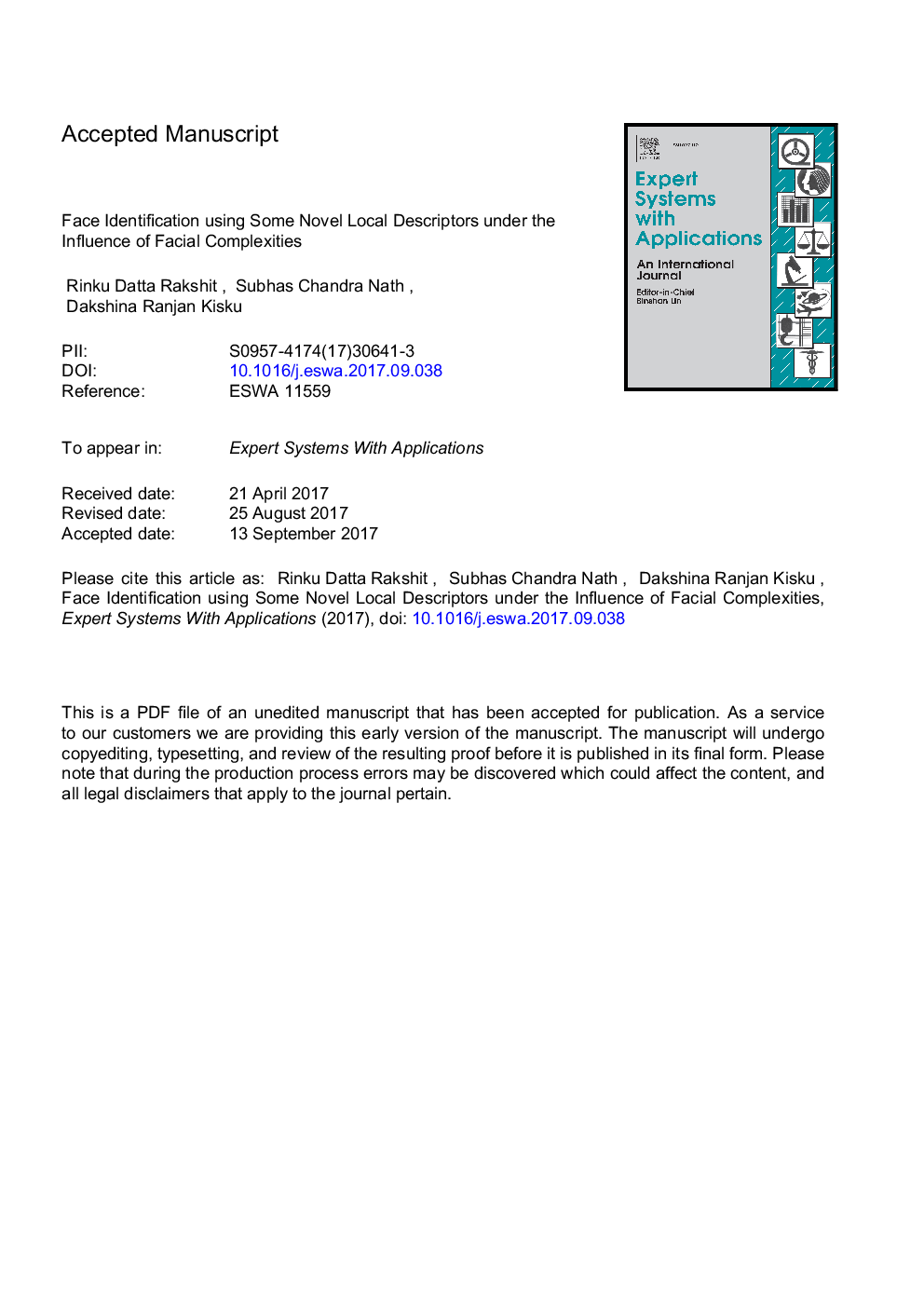| Article ID | Journal | Published Year | Pages | File Type |
|---|---|---|---|---|
| 4942999 | Expert Systems with Applications | 2018 | 45 Pages |
Abstract
This paper reports a face identification system for visible, look-alike and post-surgery face images of individuals using some novel variants which are exploited from local graph structure (LGS). The proposed LGS variants attempt to improve the performance of the face identification system under the influence of pose changes, facial expression changes, illumination variation, makeup, accessories (glasses) and facial complexity (look alike and plastic surgery). The idea is to represent each pixel along with its neighborhood pixels of a face image based on the regenerated directed local graph structure. From the newly defined local graph structure a binary pattern is generated for each pixel and this binary string is then converted into a decimal value and generates a transformed pattern. Finally, this transformed pattern is used to generate a concatenated histogram which is then used for matching and identification by using three well-known classifiers, namely, locally scaled sum of squared differences (LSSD), locally scaled sum of absolute differences (LSAD), and histogram intersection (HI). Unlike prior works, face images do not have to undergo the preprocessing stages as each novel variant deals with local structure of a face image by disregarding other effects. The UMIST, the JAFFE, the Extended Yale Face B, the Look-alike and the Plastic Surgery face databases are used for the evaluation. Extensive experiments on face databases exhibit promising and convincing results. Further, the experimental results have led to a robust identification system which is found to be invariant to different challenges made of due to capturing environment and face modality changes.
Related Topics
Physical Sciences and Engineering
Computer Science
Artificial Intelligence
Authors
Rinku Datta Rakshit, Subhas Chandra Nath, Dakshina Ranjan Kisku,
